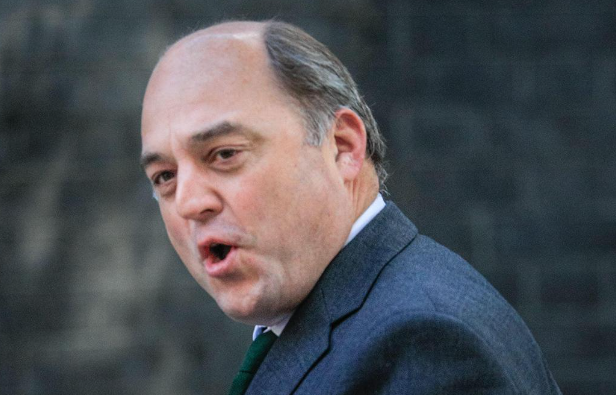
Ben Wallace
LONDON—The UK will spend an additional £2.5 billion ($3.3 billion) to bolster munition stocks as part of a revised national defense plan crafted in response to Russia’s invasion of Ukraine.
The defense ministry’s Command Paper Refresh, published July 18, calls for investment in the country’s depleted munition stockpiles, reiterates plans to raise defense research and development investment, and will make additional personnel investments.
The new document follows the publication of a refreshed integrated review, which called for the UK to deal with what ministers see as an “epoch-defining challenge” from China, despite the more immediate threat posed by Russia.
But the refreshed command paper will not deliver “any major new platform” or “unsustainable force designs,” Defense Secretary Ben Wallace told the House of Commons. “As Russia has so effectively proven, there is no point having parade ground armies, mass ranks and many machines if they cannot be integrated as a single, full-spectrum [fighting force].”
The command paper demands investment in integrated air and missile defense, with potential opportunities to do so through the AUKUS pact between the UK, U.S. and Australia. Air and missile defense has long been deprioritized in the belief that the Royal Air Force and its partners would be able to guarantee air superiority. But with adversaries investing in long-range cruise missiles and low-cost, one-way attack drones, there is increasing recognition that air and missile defense is an essential capability.
Wallace said he wants to create a new “culture of innovation across defense,” with research and development focused on lower-cost, £100 solutions that can stop “£100 million threats in their tracks.
“Ukraine reminds us that time waits for no one and that it is no good holding out for the 100% solution that is obsolete by the time it’s launched—80% is often good enough,” he said.
Wallace also said he wants to end long-running acquisition programs that span decades. So the defense ministry will set maximum delivery periods—five years for hardware and three years for digital systems.
“We must shift our whole organizational culture away from the previous peacetime mentality to one where we live and operate as we would fight, focusing more on outputs and inputs and achieving a better balance between risk and reward,” Wallace told lawmakers.
Other changes include the creation of a so-called Global Response Force for international contingencies such as the evacuation of UK nationals from Sudan earlier this year.
The defense budget increase is relatively minor compared with other European nations, reflecting the UK’s economic difficulties since Brexit and the COVID-19 pandemic. Although the UK has consistently met NATO’s defense spending target of 2% of GDP, the British government says it will move toward 2.5% in recognition that NATO now sees the 2% figure as a floor rather than a ceiling.
Opposition lawmakers have been stinging in their criticism, saying that the new plan is being driven by costs rather than threats. They noted that 26 other countries have “rebooted” their defense postures.
The document’s release represents one of the final acts of Wallace’s tenure. He is set to step down as defense secretary when Parliament begins its summer recess later this week. His replacement has not yet been chosen.





